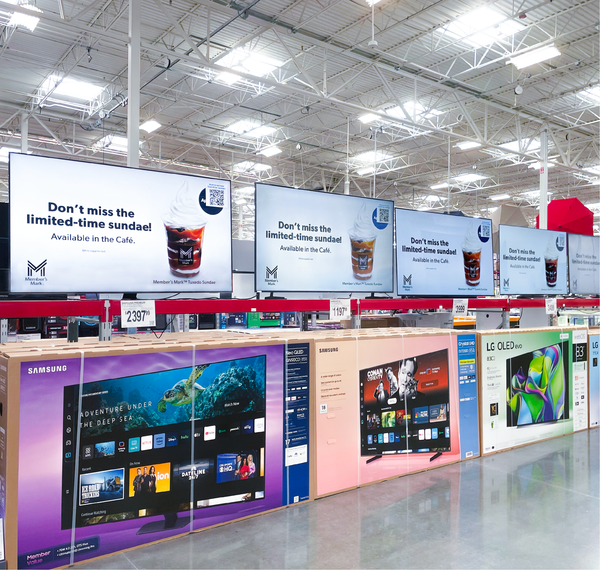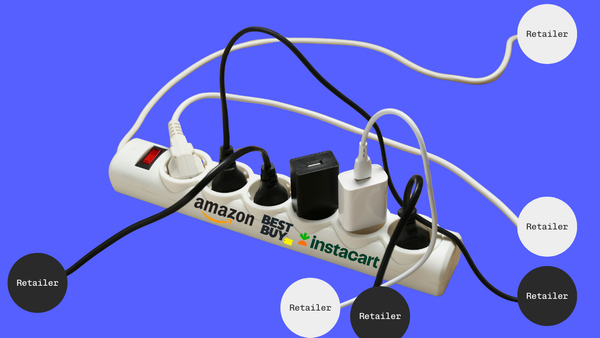Mary Meeker Is So Back: My Notes From Her 340-Page AI Futurecast
I spent 2 hours reading Mary Meeker’s 340-page AI trends report so you don’t have to... But you probably still should. Here are my 6 highlights for retailers, brands and agencies.
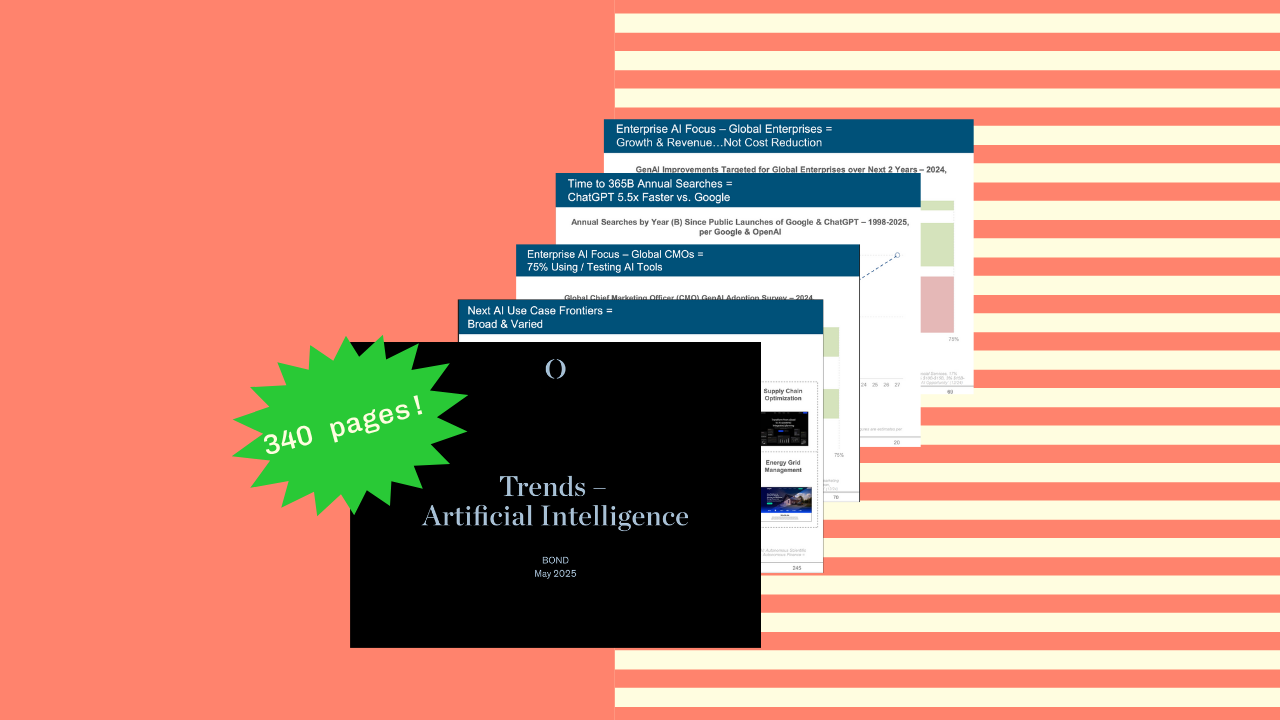
Mary Meeker is a renowned venture capitalist and former Wall Street analyst known as the "Queen of the Internet" for her influential annual Internet Trends reports that have forecasted major shifts in tech, commerce, and consumer behavior since the 1990s.
But she stopped putting out reports in 2019 to focus on her new investment firm, Bond.
So I was thrilled to find out that she dusted off the big-deck format again yesterday because generative AI's adoption curve is, in her words, "unprecedented" and moving "faster than any prior tech cycle."
My reaction to this year’s 340-page tome: not a whole lot of surprises here if you've been following AI news even casually. Lots of establishing data showing how AI has been adopted faster than any technology in history, how it's being used by consumers and organizations, how the big AI companies are growing rapidly.
But what the report does really well is tell the "story" of AI—how it just came to be everywhere and all we seem to talk about, and also why we should continue talking about it because it has already irreparably changed the course of history as we know it. Its a great reference to pull out when you need to convince someone – whether your boss or your mom – that AI is not a fad.
My emotional reaction during the 2 hours I spent reading through it today: "thrilling," in both senses of the word. Very exciting, but also unsettling. A jolt to the system.
Today I’m sharing 6 highlights from the report which are relevant to us in the retail sector.
1. From "Chatbots" to Agentic Copilots
We're bustling past those FAQ-style chat widgets that nobody really likes toward long-running agents that can reason, act, and complete multi-step tasks on a user's behalf.
The deck already shows mainstream launches happening right now—Salesforce Agentforce, Anthropic's Claude computer-use agent, OpenAI Operator, and drum roll please... Amazon Nova Act—all targeting commerce and customer experience workflows.
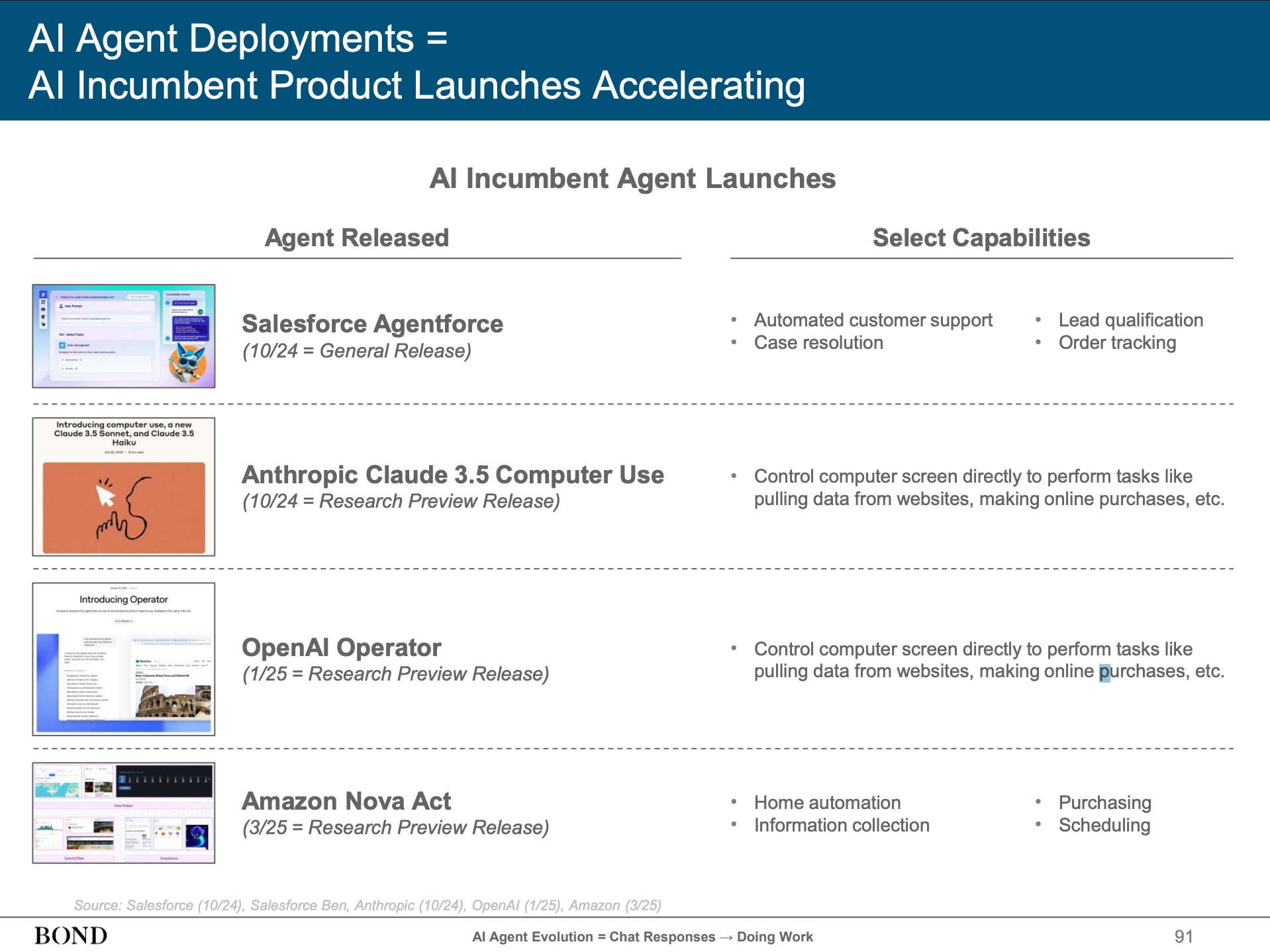
Why this matters in retail:
- Brands and retailers must integrate with whatever AI sidekick your customer is already using. New protocols like Model Context Protocol (MCP) and Agent2Agent that allow AI agents to parse your product catalog and take actions directly rather than clumsily crawling the front-end of a website like a confused shopper. This is the path that Walmart is pursuing.
- The future of onsite Sponsored Product Ads – the bastion of retail media as it currently stands – are in question as more ad spend shifts to consumer-facing AI agents. Read more in my article for Forbes over the weekend, Why AI Search Advertising Could Reach $25 Billion By 2029
2. Lightning-Speed Consumer Adoption
Every tech cycle seems to be halving the time it takes to reach 50% household penetration. ChatGPT crossed 365 billion annual searches in just two years—that's 5.5 times faster than Google's climb to the same milestone.
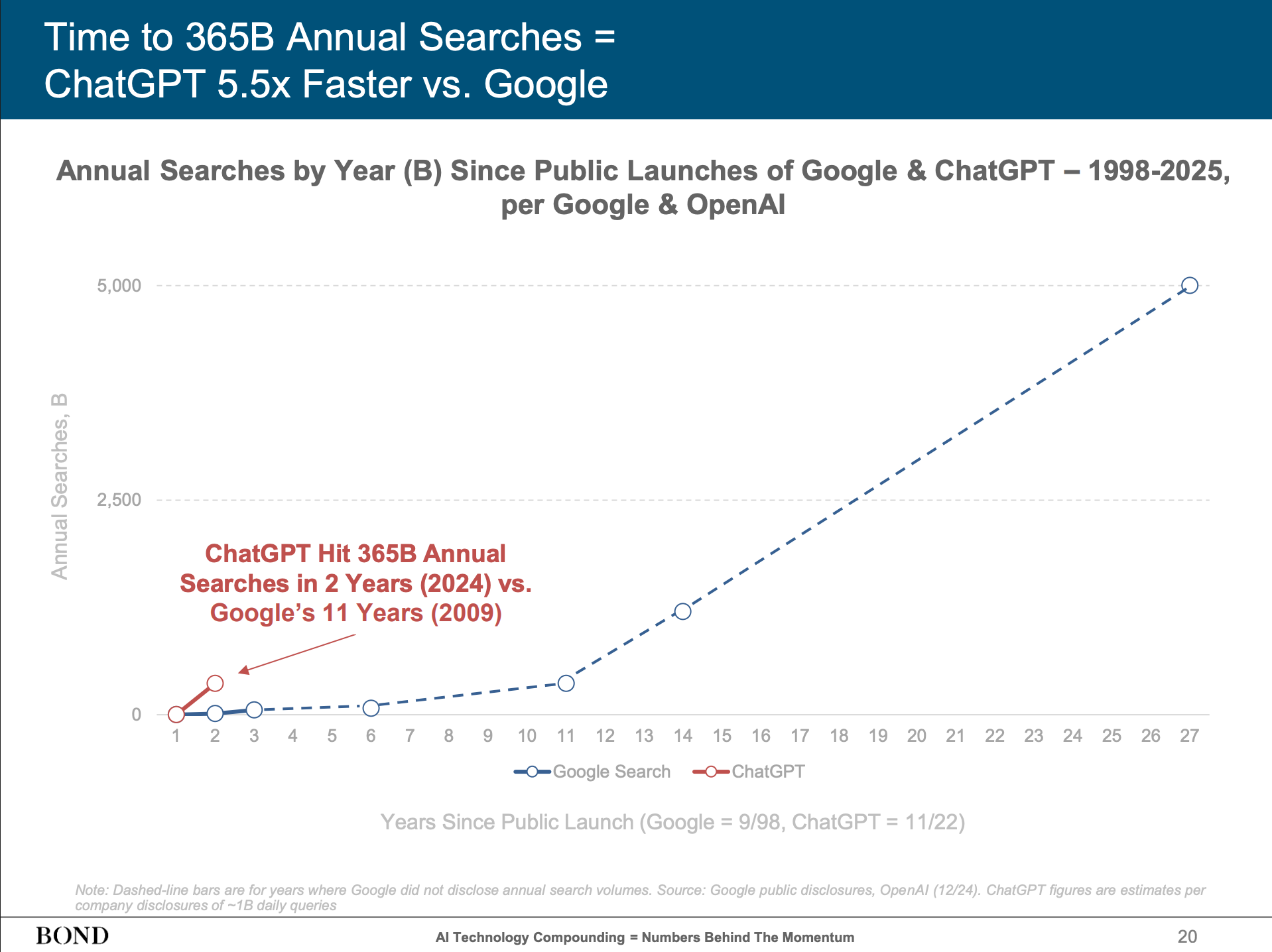
Meeker points out this is the first tech cycle to debut globally on Day 1, which compressed the usual diffusion curve. No gradual rollout, no waiting for international expansion—everyone got access to these tools simultaneously.
Why this matters in retail:
- Mass AI literacy means emerging shoppers (whether younger generations or emerging markets) will arrive expecting natural-language search, personalized discovery, and "Buy-for-me" type agents.
3. Marketing Gets the AI Treatment First
75% of global CMOs are already testing or using Gen-AI tools, according to Morgan Stanley data.
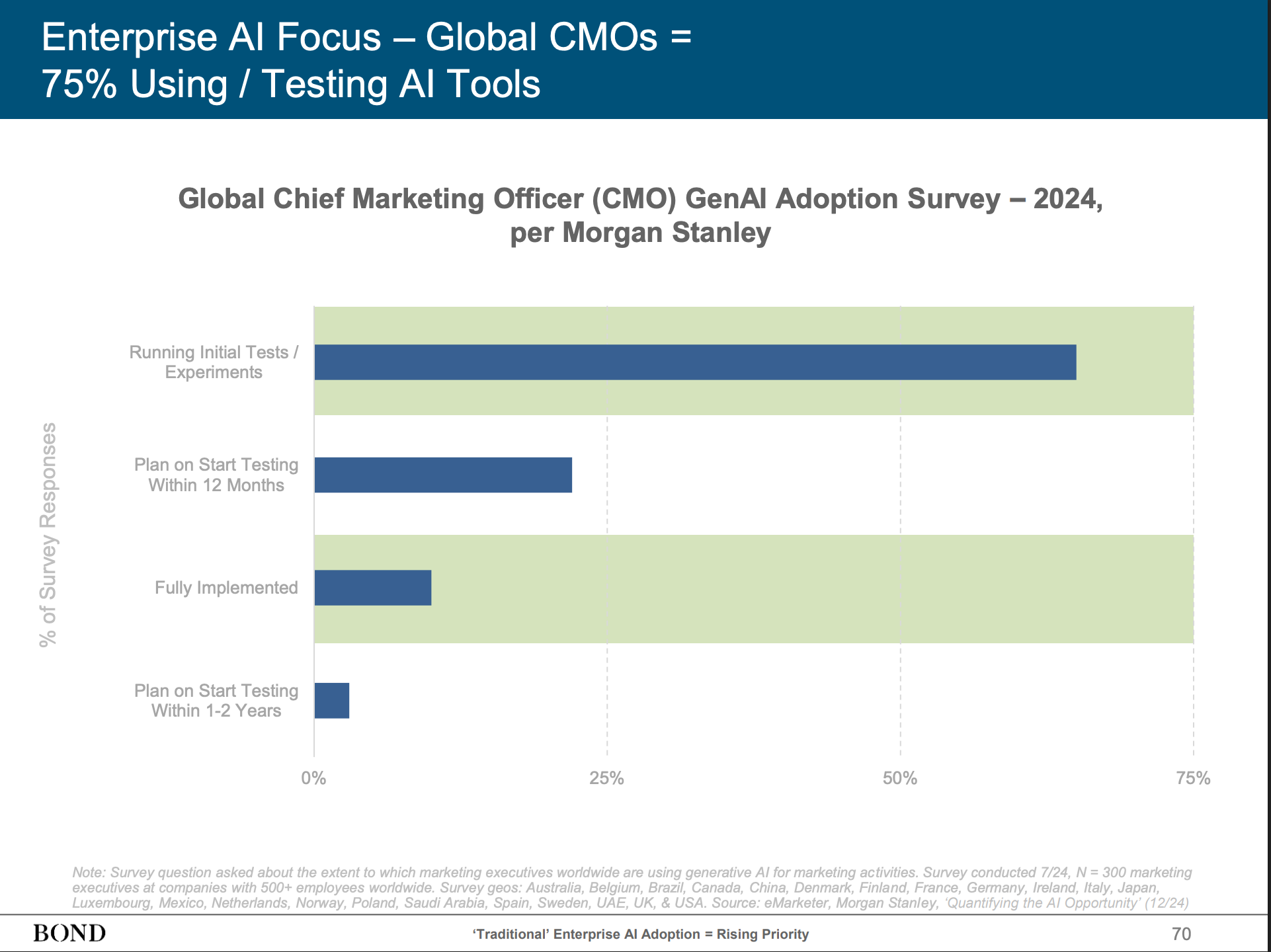
Why this matters for retail:
- Creative velocity - brands can already auto-generate hundreds of ad variants and product content and let the data choose which wins.
- Reassuringly, the same section highlights revenue generation—not cost-cutting—as the primary driver.
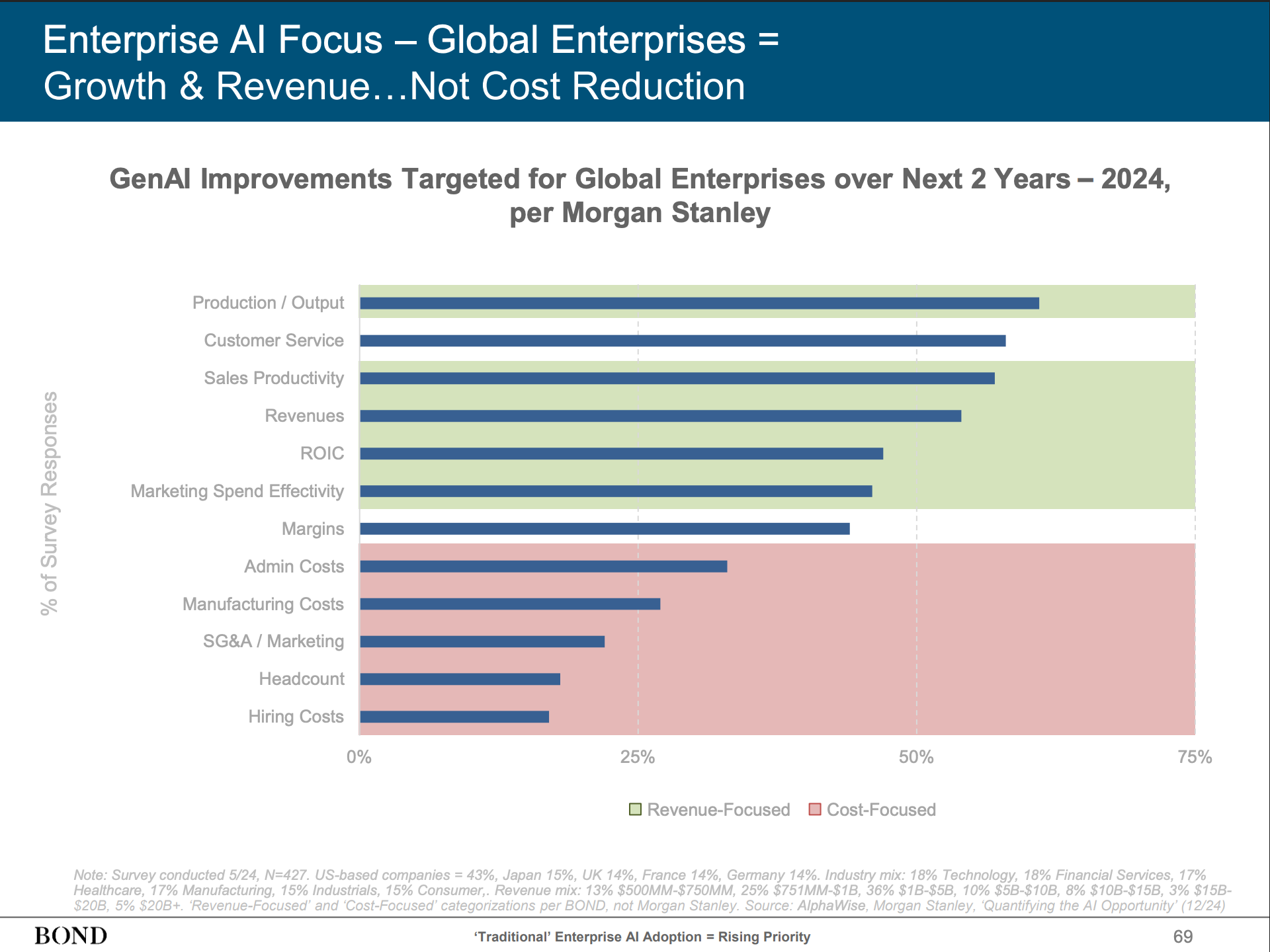
4. Infrastructure and Supply Chain Revolution
Meeker flags supply chain optimization, precision manufacturing, and multi-purpose robotics among the next big AI frontiers.
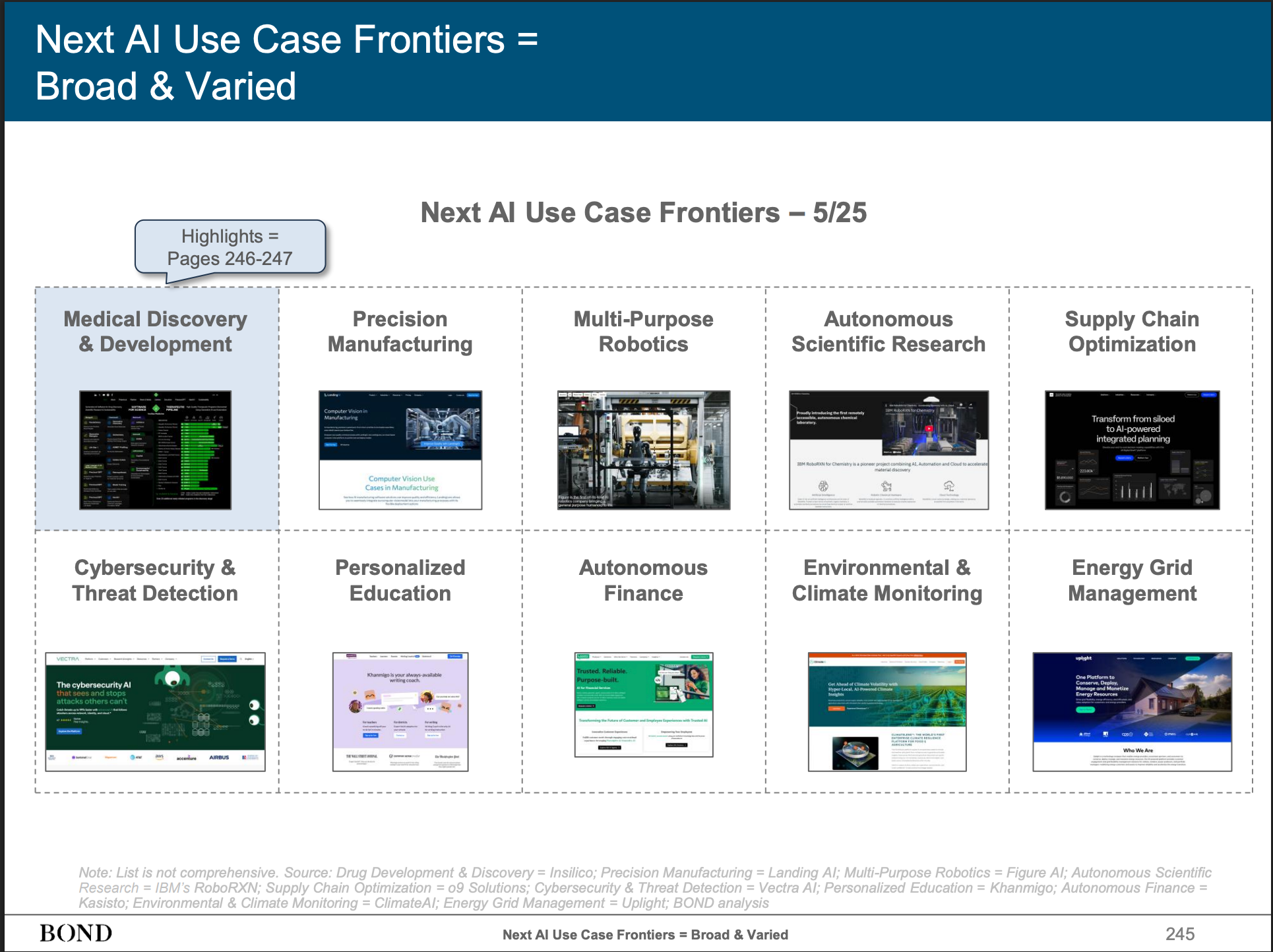
Innovation in autonomous vehicles—she shows Waymo and Tesla's cumulative fully self-driven miles as the consumer-first beachhead. Commercial applications are following, making shipping, logistics, and trucking dramatically cheaper.
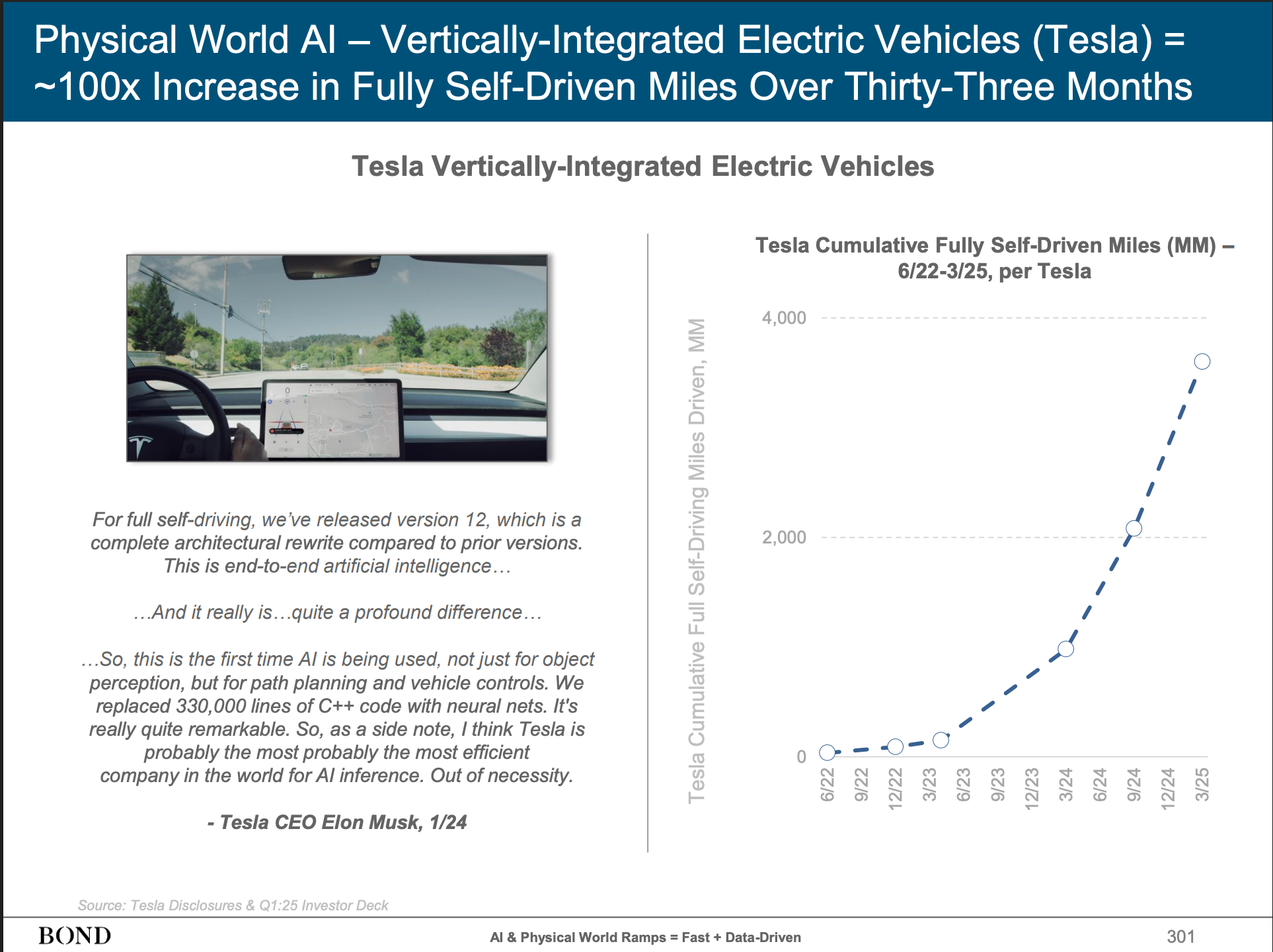
Why this matters for retail:
- Dynamic routing, demand forecasting, and autonomous distribution centers will cut stock-outs while freeing up cash that's currently tied up in inventory and logistics inefficiencies.
5. Workforce Reinvention (The Productivity Question)
US AI-related job postings have risen 448% since 2018 while non-AI IT postings fell 9%. And in live production environments, customer support agents who use AI are handling 14% more chats per hour.
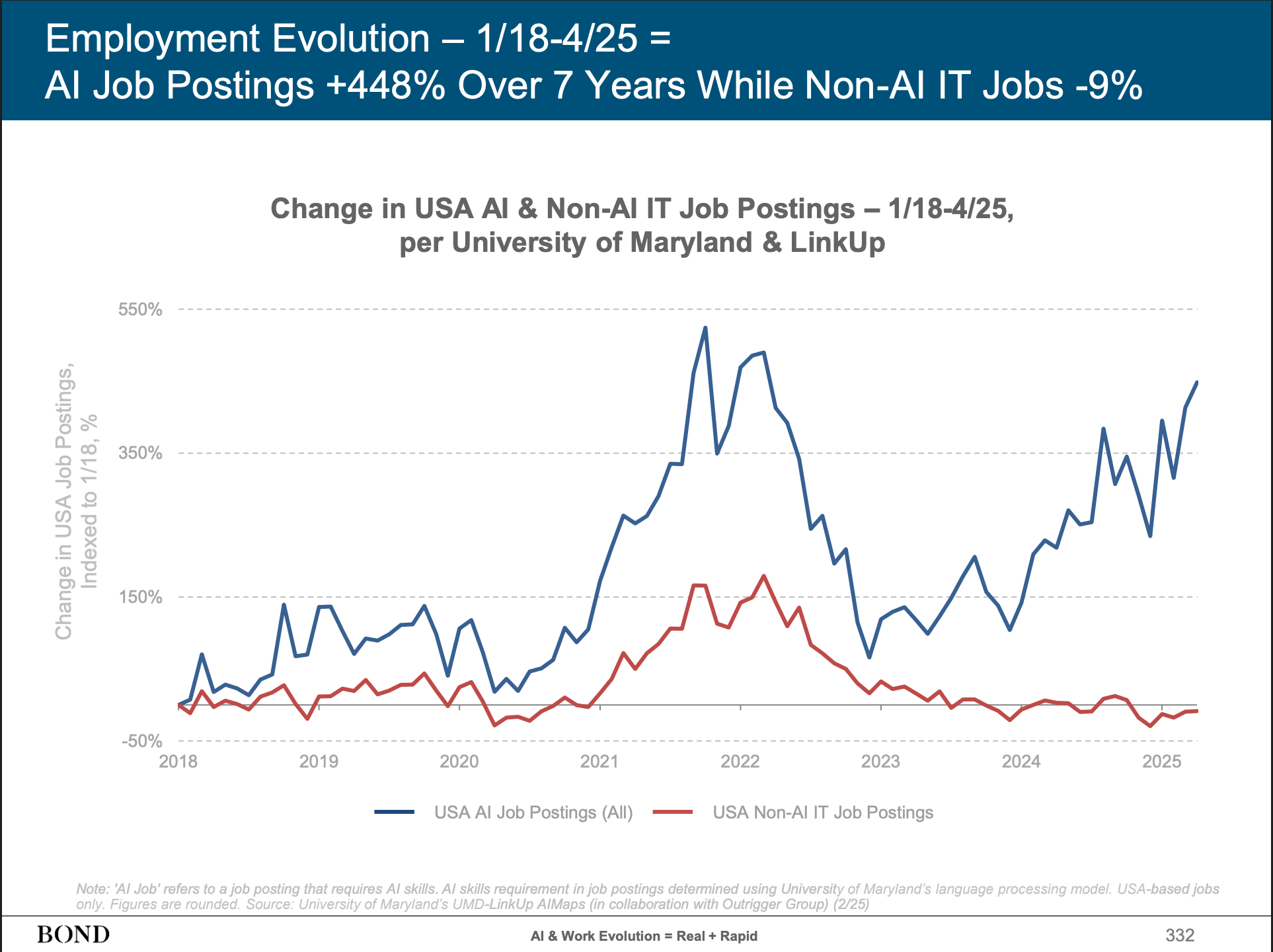
Why this matters for retail:
- The head count mix is skewing toward high-skill, low-volume roles—think prompt engineers and oversight positions rather than manual processors.
- Being a senior media buyer or an Ecomm Director will very soon look like managing "teams" of agents who are trained and focused on specific outcomes, rather than managing a team of junior staffers
6. The Global Internet Gets a Fresh Start
2.6 billion people (32% of the world's population) still aren't online, but thanks to low-cost satellite-driven internet connectivity, that's changing fast.
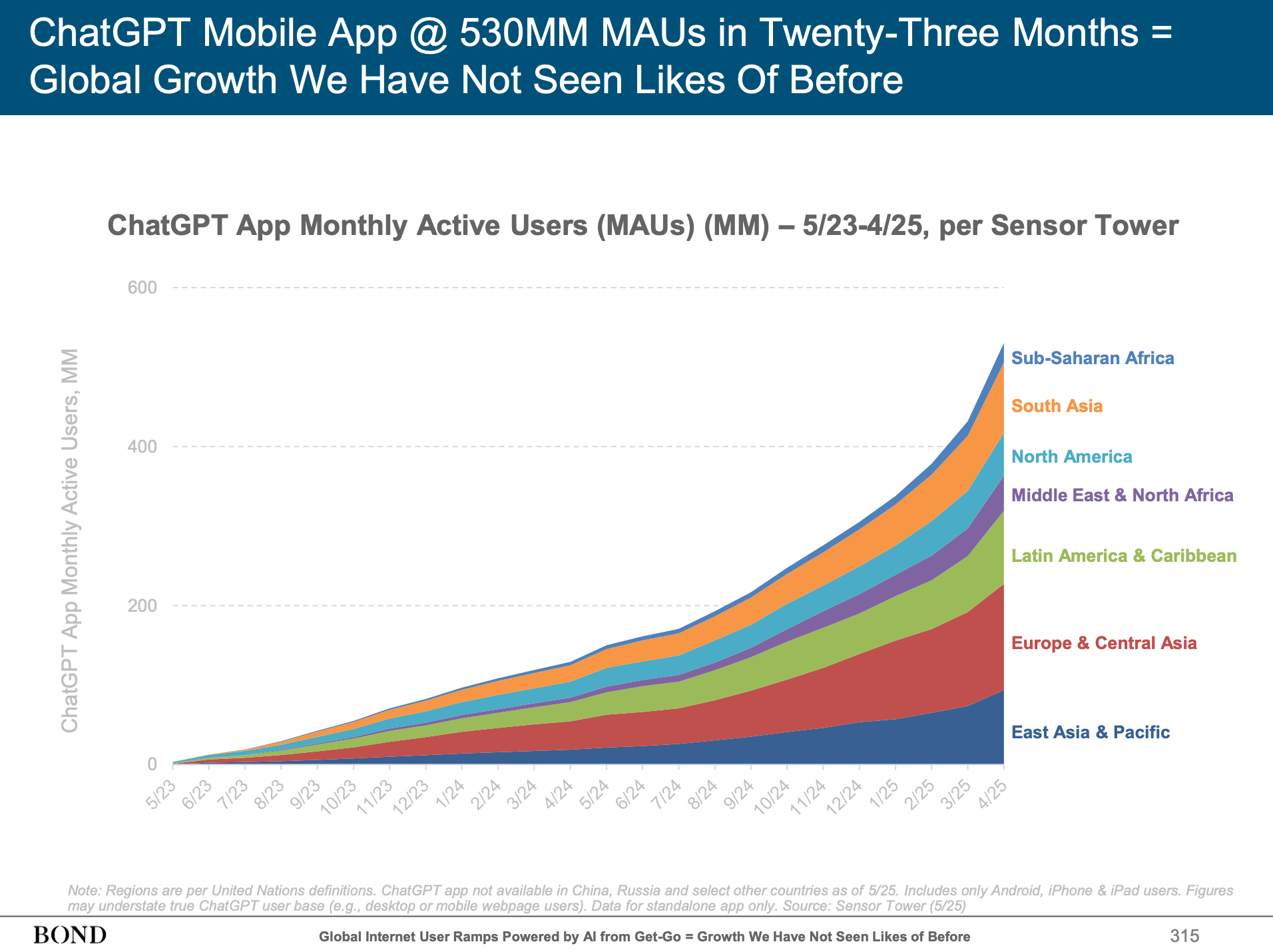
And as Meeker's report puts it: When these new users come online, they likely won't be met by browsers and search bars. "They'll start with AI—and in their native language. Imagine a 'first experience' of the internet that doesn't involve typing a query into a search engine but instead talking to a machine that talks back."
Meanwhile, real-time translation and voice cloning tools are erasing localization barriers. The report highlights companies like ElevenLabs showing Fortune 500 uptake ("the company’s tools have been adopted by employees at over 60% of Fortune 500 companies") and hockey-stick usage growth.
Why this matters for retail:
- Cross-border selling and localized content are going to signficantly cut international expansion costs. Combine this with point number 4 about logistics costs getting cut, and we can see a future where its faster and cheaper to expand to new geographies than ever before.
- Reviews and user-generated content can quickly flow back in local languages – just like we currently see in Amazon's product review ecosystem.
What This All Means
I keep coming back to a quote Meeker includes from Alasdair Nairn's 'Engines That Move Markets,' which distills two centuries of economic cycles:
"The winners of these competitive struggles are not always those who have the best technology, but those who can most clearly see the way that an industry or market is likely to develop...
While identifying the winners from any new technology is often perilous and difficult, it is almost invariably simpler to identify who the 'losers' are going to be."
That last line hits hard. We might not know exactly which AI strategies will dominate retail in five years, but we can probably spot the current practices and business models that are going to get left behind.
The companies still thinking in terms of keyword search when everyone else has moved to conversational interfaces. The ones treating AI as a nice-to-have rather than rebuilding their core customer experience around it. The ones who think they can wait this one out.
Mary Meeker's return to her 300-page reports feels like a wake-up call. AI isn't just a productivity tool—it's changing huge swaths of consumer behavior, economic fortunes, and even geopolitical futures. And unlike previous tech cycles, this one isn't giving anyone time to catch up.


